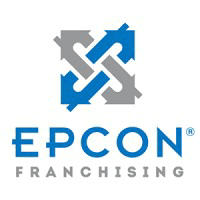Not sure if 1st Class Real Estate is right for you?
Talk to a Franchise Advisor who can match you with your perfect franchise based on your goals, experience, and investment range.
Talk to an Expert
1st Class Real Estate
How much does 1st Class Real Estate cost?
Initial Investment Range
$38,500 to $63,500
Franchise Fee
$35,500 to $51,450
The franchise offered is for a 1st Class Real Estate Area Representative arrangement pursuant to which you recruit and support 1st Class Real Estate Unit franchise owners.
Enjoy our partial free risk analysis below
Unlock the full risk analysis to access 9 more categories covering 100+ risks.
1st Class Real Estate April 16, 2025 FDD Risk Analysis
Free FDD Library AI Analysis Date: July 16, 2025
DISCLAIMER: Not Legal Advice - For Informational Purposes Only. Consult With Qualified Franchise Professionals.
Franchisor Stability Risks
Start HereDisclosure of Franchisor's Financial Instability
High Risk
Explanation
The franchisor explicitly discloses its financial condition as a special risk. The audited financial statements in Item 21 confirm this, showing a significant negative members' equity (deficit) of over $593,000 in 2024. This insolvency raises serious questions about the company's long-term stability and its ability to fund support, potentially jeopardizing your investment. State regulators have also required fee deferrals due to this condition, which is a significant red flag.
Potential Mitigations
- An experienced franchise accountant must review the financials, paying close attention to the negative equity, cash flow, and reliance on franchise fees.
- Your attorney should analyze the protections offered by state-mandated fee deferrals and any required financial assurances like bonds.
- Discuss the franchisor's plan for achieving solvency and its financial stability with your business advisor before making any commitment.
High Franchisee Turnover
Low Risk
Explanation
The data in Item 20 does not indicate a high rate of franchisee turnover through terminations, non-renewals, or other cessations. Generally, high turnover can be a red flag, suggesting potential problems with the franchise system's profitability, support, or franchisee-franchisor relations. A stable system typically exhibits low turnover rates, and this FDD does not present data to the contrary.
Potential Mitigations
- It is still valuable to contact a representative sample of current franchisees listed in Item 20 to discuss their satisfaction and profitability.
- Your business advisor can help you formulate questions for current franchisees regarding their experiences and long-term plans with the system.
- During your due diligence, asking the franchisor about the circumstances surrounding the one "ceased operation" noted in Item 20 can provide full clarity.
Rapid System Growth
Medium Risk
Explanation
Item 20 data shows growth from 15 to 23 Area Representatives from 2022 to 2023, but zero net growth in 2024. This plateau, combined with the significant financial instability detailed in Item 21 (a large members' deficit), could suggest the franchisor's infrastructure may be strained or that its growth phase has stalled. A support system that has not scaled adequately could present a risk to new and existing franchisees.
Potential Mitigations
- Question the franchisor directly about its capacity and plans for scaling its support infrastructure; a business advisor can help assess its capabilities.
- A thorough review of the franchisor's financials in Item 21 with your accountant is critical to assess if they have the resources to support the existing system.
- Interview a broad range of existing Area Representatives about the current quality, responsiveness, and adequacy of franchisor support.
New/Unproven Franchise System
High Risk
Explanation
The franchisor, 1st Class Franchising, LLC (1st Class LLC), began offering franchises in 2018, making it a relatively young system. More significantly, the audited financials in Item 21 show a substantial members' deficit, indicating insolvency. While management has industry experience, the combination of a young system with precarious financial health presents a heightened risk of instability, potentially impacting the brand's viability and the franchisor's ability to provide long-term support.
Potential Mitigations
- Conduct extensive due diligence on the founders' and management's experience in both the real estate industry and in franchising with your business advisor.
- Speaking to the earliest Area Representatives from the Item 20 list is crucial to understand their experiences with the system's evolution and support.
- Your accountant must help you assess the franchisor's capitalization and the significant risks posed by its negative equity position.
Possible Fad Business
Low Risk
Explanation
The business model, a real estate brokerage, is a well-established industry and does not appear to be based on a short-lived fad. The long-term success will likely depend more on general economic conditions, the housing market, and the specific execution of the business model rather than on a fleeting consumer trend. The core service has demonstrated sustained demand over time.
Potential Mitigations
- Assess the long-term market demand for real estate services in your specific region with your business advisor and a local real estate professional.
- Evaluate the franchisor's plans for innovation and adaptation to stay competitive within the established real estate industry.
- Consider the sustainability of the business model and its resilience to economic and housing market downturns with your financial advisor.
Inexperienced Management
High Risk
Explanation
While the key executives in Item 2 have experience in real estate, the franchisor itself is relatively young (since 2018) and, most critically, is in a precarious financial position as shown in Item 21. Even with experienced management, a financially unstable company may lack the resources to execute its vision, provide robust support, or weather economic challenges, which presents a significant risk to franchisees who rely on the franchisor's stability.
Potential Mitigations
- Thoroughly vet the management team's background, especially their experience in managing a franchise system through financial challenges, with your business advisor.
- Speak extensively with existing Area Representatives about their direct experiences with the quality of management's support and strategic decisions.
- Your accountant should help you weigh the management's experience against the substantial financial risks disclosed in the FDD.
Private Equity Ownership
Low Risk
Explanation
Item 1 does not indicate that the franchisor is owned by a private equity firm. This type of ownership can sometimes introduce risks related to short-term profit motives over the long-term health of the franchise system. The ownership structure appears to be centered around the parent company, 1st Class Holding Inc., and the individuals disclosed in Item 2.
Potential Mitigations
- It is still prudent to ask your attorney to verify the complete ownership structure of the franchisor and its parent company.
- Speaking with current franchisees can provide insight into the franchisor's long-term vision and commitment to franchisee success.
- A business advisor can help you research the background of the individuals who control the parent company.
Non-Disclosure of Parent Company
High Risk
Explanation
The FDD discloses a parent company, 1st Class Holding Inc., but does not provide its financial statements. While not always required, given that the franchisor entity (1st Class LLC) has a significant members' deficit (insolvency) as shown in Item 21, the financial health of the parent becomes highly material to assessing the overall stability and backing of the system. Without the parent's financials, your ability to gauge the true financial risk is limited.
Potential Mitigations
- Your attorney and accountant should question the franchisor on why the parent company's financials are not provided, given the franchisor's insolvency.
- Inquire whether the parent company provides any financial guarantee for the franchisor's obligations and have your attorney review any such document.
- Given the lack of information, you must assume with your financial advisor that the parent may not be able or willing to support the franchisor.
Predecessor History Issues
Low Risk
Explanation
Item 1 states the franchisor has no predecessors. This means the current entity is the one that has developed and operated the system from the start. Therefore, risks associated with an incomplete or negative history from a prior owner of the brand are not present here. The system's track record, as disclosed in the FDD, begins with the current franchisor.
Potential Mitigations
- Confirm with your attorney that the corporate history described in Item 1 does not indicate any asset transfers that should have triggered a predecessor disclosure.
- Your due diligence should focus on the operational history of the current franchisor, as guided by your business advisor.
- Speaking with the longest-tenured franchisees can help verify the franchisor's historical narrative.
Pattern of Litigation
Medium Risk
Explanation
Item 3 discloses that 1st Class LLC initiated two lawsuits against its franchisees in the last fiscal year. These suits were to collect past due payments and enforce non-compete covenants. While a franchisor has the right to enforce its agreements, initiating litigation against its own franchisees can be indicative of potential underlying issues in the system or a potentially adversarial relationship. It may suggest franchisees are struggling financially or that disputes are common.
Potential Mitigations
- Your attorney should carefully review the nature of the litigation disclosed in Item 3.
- Discussing the franchisor's relationship with its franchisees with a number of current Area Representatives is crucial for context.
- Inquire with your business advisor whether this level of litigation is typical for a system of this size and age.
Disclosure & Representation Risks
Example Risk: Franchisee Financial Obligations
Blue Risk
Explanation
This risk involves the financial obligations that a franchisee must meet, including initial fees, ongoing royalties, and other required payments. Understanding these obligations is crucial for long-term success.
Potential Mitigations
- Carefully review the Franchise Disclosure Document (FDD) and consult with a franchise attorney to fully understand all financial commitments before signing.
- Conduct regular risk assessments
- Implement monitoring and reporting systems
Unlock Full Risk Analysis
Purchase the complete risk review to see all 102 risks across all 10 categories.
Financial & Fee Risks
Example Risk: Franchisee Financial Obligations
Blue Risk
Explanation
This risk involves the financial obligations that a franchisee must meet, including initial fees, ongoing royalties, and other required payments. Understanding these obligations is crucial for long-term success.
Potential Mitigations
- Carefully review the Franchise Disclosure Document (FDD) and consult with a franchise attorney to fully understand all financial commitments before signing.
- Conduct regular risk assessments
- Implement monitoring and reporting systems
Unlock Full Risk Analysis
Purchase the complete risk review to see all 102 risks across all 10 categories.
Legal & Contract Risks
Example Risk: Franchisee Financial Obligations
Blue Risk
Explanation
This risk involves the financial obligations that a franchisee must meet, including initial fees, ongoing royalties, and other required payments. Understanding these obligations is crucial for long-term success.
Potential Mitigations
- Carefully review the Franchise Disclosure Document (FDD) and consult with a franchise attorney to fully understand all financial commitments before signing.
- Conduct regular risk assessments
- Implement monitoring and reporting systems
Unlock Full Risk Analysis
Purchase the complete risk review to see all 102 risks across all 10 categories.
Territory & Competition Risks
Example Risk: Franchisee Financial Obligations
Blue Risk
Explanation
This risk involves the financial obligations that a franchisee must meet, including initial fees, ongoing royalties, and other required payments. Understanding these obligations is crucial for long-term success.
Potential Mitigations
- Carefully review the Franchise Disclosure Document (FDD) and consult with a franchise attorney to fully understand all financial commitments before signing.
- Conduct regular risk assessments
- Implement monitoring and reporting systems
Unlock Full Risk Analysis
Purchase the complete risk review to see all 102 risks across all 10 categories.
Regulatory & Compliance Risks
Example Risk: Franchisee Financial Obligations
Blue Risk
Explanation
This risk involves the financial obligations that a franchisee must meet, including initial fees, ongoing royalties, and other required payments. Understanding these obligations is crucial for long-term success.
Potential Mitigations
- Carefully review the Franchise Disclosure Document (FDD) and consult with a franchise attorney to fully understand all financial commitments before signing.
- Conduct regular risk assessments
- Implement monitoring and reporting systems
Unlock Full Risk Analysis
Purchase the complete risk review to see all 102 risks across all 10 categories.
Franchisor Support Risks
Example Risk: Franchisee Financial Obligations
Blue Risk
Explanation
This risk involves the financial obligations that a franchisee must meet, including initial fees, ongoing royalties, and other required payments. Understanding these obligations is crucial for long-term success.
Potential Mitigations
- Carefully review the Franchise Disclosure Document (FDD) and consult with a franchise attorney to fully understand all financial commitments before signing.
- Conduct regular risk assessments
- Implement monitoring and reporting systems
Unlock Full Risk Analysis
Purchase the complete risk review to see all 102 risks across all 10 categories.
Operational Control Risks
Example Risk: Franchisee Financial Obligations
Blue Risk
Explanation
This risk involves the financial obligations that a franchisee must meet, including initial fees, ongoing royalties, and other required payments. Understanding these obligations is crucial for long-term success.
Potential Mitigations
- Carefully review the Franchise Disclosure Document (FDD) and consult with a franchise attorney to fully understand all financial commitments before signing.
- Conduct regular risk assessments
- Implement monitoring and reporting systems
Unlock Full Risk Analysis
Purchase the complete risk review to see all 102 risks across all 10 categories.
Term & Exit Risks
Example Risk: Franchisee Financial Obligations
Blue Risk
Explanation
This risk involves the financial obligations that a franchisee must meet, including initial fees, ongoing royalties, and other required payments. Understanding these obligations is crucial for long-term success.
Potential Mitigations
- Carefully review the Franchise Disclosure Document (FDD) and consult with a franchise attorney to fully understand all financial commitments before signing.
- Conduct regular risk assessments
- Implement monitoring and reporting systems
Unlock Full Risk Analysis
Purchase the complete risk review to see all 102 risks across all 10 categories.
Miscellaneous Risks
Example Risk: Franchisee Financial Obligations
Blue Risk
Explanation
This risk involves the financial obligations that a franchisee must meet, including initial fees, ongoing royalties, and other required payments. Understanding these obligations is crucial for long-term success.
Potential Mitigations
- Carefully review the Franchise Disclosure Document (FDD) and consult with a franchise attorney to fully understand all financial commitments before signing.
- Conduct regular risk assessments
- Implement monitoring and reporting systems
Unlock Full Risk Analysis
Purchase the complete risk review to see all 102 risks across all 10 categories.










